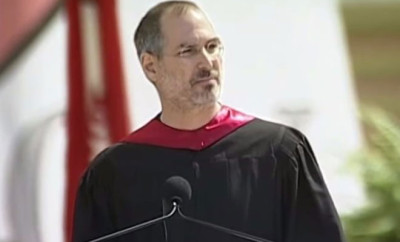
Do You Know What Kind Of A Leader You Are?
There’s a big myth in leadership that there is only one kind of leader that we should all aspire to. Well, we used to think that. Today we know that’s non-sense! The myth-busting truth that shatters this is there are many kinds of leaders and that each kind is needed in different contexts. Not only that, but if an organization is to be successful and effective, then we need many different kinds of leaders.
Actually, one way to sabotage a business is for the senior managers to seek to replicate only one form of leadership. Do that and you create a major problem with “leadership” in the company. Then the entire leadership will become monotone and lack the richness that having a variety of leadership styles would provide.
The truth is that there are many ways to map out what leaders do and the various kinds of leadership. For example, a person can be a leader by specializing in leading the mind, heart, life, group, or corporation.
- Given that, can you describe your kind of leadership?
- Can you identify your leadership style and how it fits into your organization?
For the sake of this article, I will mention five key kinds of leadership. There are more, but these are the most crucial.
Kinds of Leadership
Idea Leaders — Leading the mind with ideas.
Vision Leaders — Leading the heart with dreams.
Lifestyle Leaders — Leading life with actions.
Activist Leaders — Leading movements with calls to action.
Corporate Leaders — Leading organizations with structures.
1) Idea leaders
There are leaders who specialize in leading the minds of people. These are the leaders of ideas. They are the thinkers, inventors, creators, heretics, and even “the weirdos.” They lead out in the conceptual area, pioneering new possibilities. They lead by thinking in new and different ways and the new insights, understandings, intentions, etc. that create add value to a business.
2) Visionary leaders
These leaders specialize in the leading the hearts of people. They are the leaders of dreams, visions, hopes, and passions. These visionaries are the ones who create, or catch, a vision and then are able to inspire people about a new way of life or new solution to problems. Typically they are charismatic, exciting, full of energy, full of life, vivacious, bigger than life, unforgettable.
3) Lifestyle leaders
These leaders specialize in leading the activities and lives of people. As lifestyle leaders, they who are especially brilliant at living something, at being an excellent model of it in their own lives. For them, the vision is not primarily an idea or concept, it is a way of living. It may not even be a vision, it’s just the way they live life that excites others. Lifestyle leaders truly “walk the talk” by closing the gap between knowing-and-doing. They put what’s in their mind into their muscles so that it is their way of moving through the world.
4) Activist leaders
These leaders specialize in working with and leading groups and teams. As activists leaders, they become the leaders of movements. Beyond exceling at inspiring people and mobilizing groups of people, they also excel in pulling people together, creating a ground-swell movement, and rallying people to a new idea, vision, or lifestyle. Understanding group dynamics intuitively, or by experience and learning, they exercise a brilliant leadership when they work with teams and groups.
5) Corporate leaders
These leaders specialize in leading organizations, companies, and corporations. They are the corporate leaders whose brilliance may not be with a live crowd or with group dynamics. They may not even be good at public speaking at all. Instead they know organizational development. They know how to put systems and structures into place and how to nurture a new organization and grow it. They know how to create the structures and systems for a company so that it becomes a growing and dynamic organization.
Differentiating Leaders and Leadership
Obviously, all leaders and leadership is not the same. Describing the different kinds of leaders in this way enables us to gain an understanding that a person can be “a leader” and “lead” in many different ways. It also highlights the fact that those leaders who can dance between the different domains have a special flexibility that gives them even more influence. Merely being a leader isn’t enough. To grow and develop as a leader necessitates constantly expanding the range and depth of our leadership, does it not? From this we can recognize and work with different kinds of leadership and as we do, we can see that for each there will be different skill sets, dispositions, aptitudes, strengths, and weaknesses.
1) In pioneering leadership the skill set involves being creative, non-conventional, sorting for differences, mis-matching, innovating, upsetting the status quo, being disruptive, taking wild risks, going into unknown territory, loving and embracing the ambiguous, not needing closure. Leaders of this ilk lead out to the new and show the way to new territories, new possibilities.
2) In settling leadership the skill set involves building structures and systems to begin to settle the new territory that the pioneers opened up. It is being able to hold lots of diverse people together for a common goal and vision, inventing the new systems and structures, tapping into the potentials and skills of lots of divergent people. This is the kind of leadership during the growth phase of an organization as it seeks to establish itself and begin expanding its influence.
3) In managing leadership the skill set involves the ability to manage the systems that have been created and to administer the things that the pioneers have settled so that it continues. This involves taking care of details, cleaning up messes, setting up and enforcing procedures, detailing out the most efficient process, benchmarking and implementing best practices, making the system work smoother and more efficiently.
Because different kinds of leadership calls for such different skills, perceptual filters, personality types, etc., for a leader to move between them or to lead in more than just one area, expanding our leadership skills means learning new and different skill sets as well as contextual cues for each. Here’s to your Leadership Excellence!







